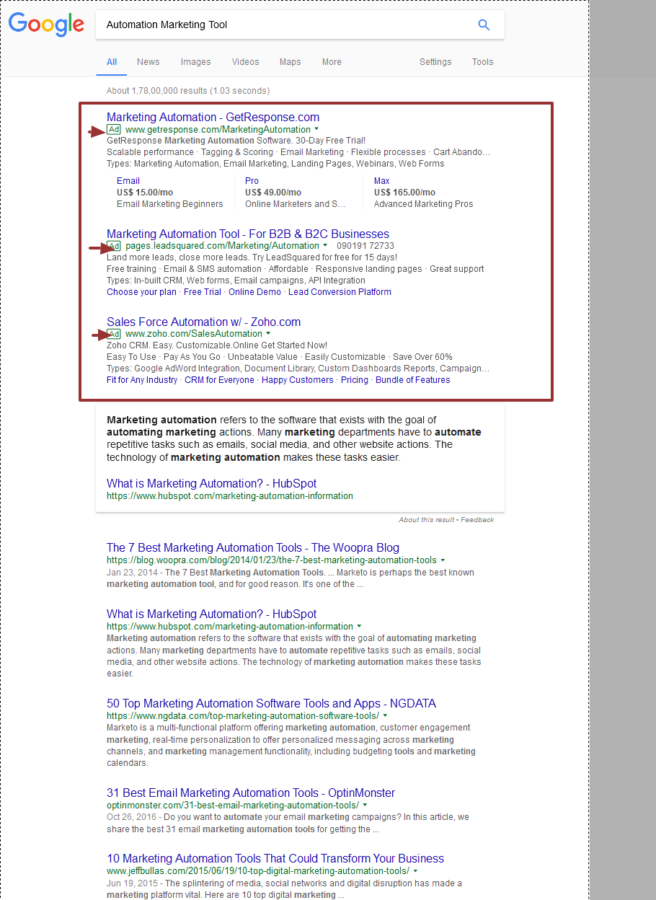To optimize your Inbound Marketing strategy and gain more leads, have you ever thought about a Pay Per Click (PPC) campaign? Fast to implement and of a formidable efficiency, if properly set, this paid advertising generates a qualified traffic whose potential for conversion is significant. Marketing proposes to you to discover this strategy in detail!
SETTING A PAY PER CLICK (PPC)
This advertising strategy is distinguished by a billing that triggers when a click is made on the paid link. As the name suggests, the advertiser will pay a specific rate each time a visitor clicks on his ad referenced in a search engine or on a social network.
This method reduces costs while increasing relevant returns. In other words, this strategy, which sometimes seems more costly, ultimately yields better spin-offs than traditional pay-for-sale campaigns.
The aim of such a method has a direct link with Inbound Marketing since it aims to increase its visibility with a qualified target to promote its business, its products, an event or a new offer.
THE BENEFITS OF A PPC CAMPAIGN
Paid ads boost your visibility! Do you know that Google devotes more than half of its first page to links from PPC campaigns?
Positioned on the preferred keywords by your persona buyers, your notoriety will increase, as well as your number of daily visitors. The other benefit of the CPP is the speed of spillovers. Unlike natural SEO strategies, whose results have a slower progression, a PPC campaign generates results as soon as it is put online.
For your Inbound Marketing strategy, it remains a flagship technique for diversifying and densifying your traffic sources. It helps you complement your Content Marketing efforts and on social networks. Be aware that a PPC campaign is easy to edit if needed. In the event of a lower ROI than expected, you can readjust your ad at any time. This flexibility proves to be very useful during your first operation, to find formula, hook, and target receptive to your advertisement. Additionally, in the event of a major event, you have the ability to quickly change the ad to surf a buzz and boost your results.
This flexibility proves to be very useful during your first operation, to find a formula, hook, and target your Pay Per Click advertisement. Many Companies often overlook the hidden advantage of PPC Marketing, like by just paying for ads doesn’t mean your ad will be clicked. You need to design ads by keeping demographic factors and eye-catching title in mind.
Additionally, in the event of a major event, you have the ability to quickly change the ad to surf a buzz and boost your results.
Finally, you remain in control of your budget throughout the campaign. It is up to you to give a maximum budget and a cost per click.
THE KEYS TO SUCCESSFUL PPC CAMPAIGNS
For high-performance results, think first about the purpose of your Inbound Marketing campaign. If you have several, it is pertinent to set up several simultaneous operations, because you have several criteria with each their advantages and disadvantages.
THE SEGMENTATION OF THE CAMPAIGN
To begin, you can segment your campaign by:
- Universe of products/services (for a whole range of goods or services)
- Product or service (for launching a novelty or promoting your star performance)
- Brand (to boost sales of one or more specific brands)
- Geographic data (especially if you have a local company)
If you intend to highlight several universes, it is strongly recommended to create a campaign by the universe. The same applies to targeting by brand or place of residence.
THE SELECTION OF KEYWORDS
Then, the second step is to select the relevant keywords for your campaign. If you want to find the terms at the best traffic/price ratio, think about Google’s keyword planner.
Then, you will have to choose the impact of its expressions in your PPC campaign:
- Wide query: Search engines display your ad when a user types your keyword, but also synonyms and misspelled words that approximate the original term. The goal is to reach a very broad target. The disadvantage is that it will not necessarily be qualified, which conflicts with the very essence of an Inbound Marketing strategy.
- Exact query: As the name suggests, this setting allows you to display your ad to users who typed your keyword exactly, with or without precision at the end. For example, if the term of your PPC campaign is “automation marketing tool”, you will appear in searches “automation marketing tool”, but also “TPE automation marketing tool”, “automation marketing automation tool” “. On the other hand, you will not appear on phrases like “tool for SME marketing automation”, “cheap marketing automation tool” …
- Exact keyword: this time you will only appear on the defined expression. No additions will be accepted.
Finally, you also have a “negative keywords” function, also called negative keywords, to specify your expression. Imagine that you choose the “exact query” option to broaden your audience, but your automation marketing tool is not for small businesses, you can define as a term to exclude “TPE”, “freelance”, “independent”, Etc.
Carefully selecting the options and keywords will help optimize the results of your PPC campaign for a much higher return on investment. By using this method regularly (or even continuously), you will reach a wider and highly qualified audience. Result: your Inbound Marketing strategy benefits from more quality leads, to be passed on to your sales people for a transformation into a customer.
